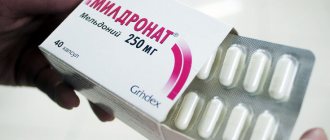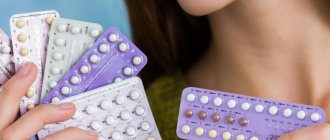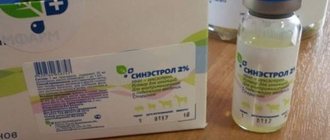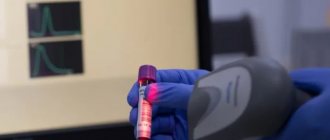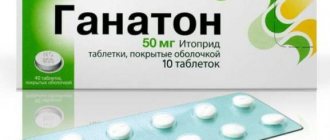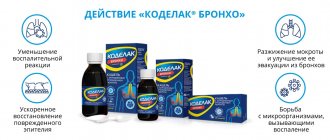Release form and packaging Puregon
The drug is available in the form of a solution that is administered intramuscularly or subcutaneously. Considering that the drug is administered according to the prescribed scheme, for convenience it is manufactured in cartridges that fit into special pens (Puregon Pen), which allows you to make injections yourself without much difficulty. Thanks to this form of release, a woman can administer it herself.
Cartridges come in several options: 0.36 ml, 0.72 and 1.08 ml and come with a set of needles. To reduce pain during an injection, as well as to use up the solution during manipulation, today they use syringes that come with small needles or a special Puregon pen. This is a special device that allows you to avoid leakage of the drug during manipulation by medical workers or self-use, because if the drug is not in full, accordingly, the dose that is required to stimulate ovulation will not be completely administered.
Puregon 300me 0.72ml 1 pc. injection solution cartridge
pharmachologic effect
Replenishes FSH deficiency. Regulates the normal growth and maturation of follicles, the synthesis of sex steroid hormones.
Composition and release form Puregon 300me 0.72 ml 1 pc. injection solution cartridge
The solution for intramuscular and subcutaneous administration is transparent, colorless. — 1 fl.:
- Active ingredients: follitropin beta (recombinant)* - 300 IU;
- Excipients: sucrose - 21 mg, sodium citrate dihydrate - 6.17 mg, polysorbate 20 - 0.105 mg, benzyl alcohol - 4.2 mg, methionine - 0.21 mg, hydrochloric acid 0.1 N or sodium hydroxide 0.1 N - up to pH 7, water d/i - 0.42 ml.
* - specific biological activity in vivo is approximately 10,000 IU FSH/ml protein.
0.36 ml - 1.5 ml colorless glass cartridges (1) complete with needles (6 pcs.) - plastic packaging (1) - cardboard packs.
Directions for use and doses
IM, s/c (slow). Anovulation - start with daily administration of 50-75 IU for 7 days, in the absence of ovarian response, the dose is gradually increased (optimally daily increase in plasma estradiol concentration by 40-100%); when the dominant follicle reaches a diameter of 18 mm or an estradiol level of 300-900 pg/ml, Puregon is canceled and human chorionic gonadotropin is administered. Induction of ovarian superovulation during in vitro fertilization in the first 4 days - 100-200 IU, then the dose is selected individually based on the reaction of the ovaries; usually 75-375 IU per day for 1-2 weeks is sufficient; in the presence of 3 follicles with a diameter of 16-20 mm and a plasma estradiol concentration of 300-400 pg/ml/follicle, the final phase of follicle maturation is stimulated with human chorionic gonadotropin; after 34-35 hours, oocytes are aspirated.
Indications for use Puregon 300me 0.72 ml 1 pc. injection solution cartridge
Female infertility due to anovulation (including polycystic ovary syndrome, refractory to clomiphene citrate); conducting assisted reproduction programs, incl. in vitro fertilization (to induce superovulation).
Contraindications
Hypersensitivity, tumors of the ovaries, breast, uterus, pituitary gland or hypothalamus, primary ovarian insufficiency, ovarian cysts or ovarian enlargement not associated with polycystic ovary syndrome, abnormal genital anatomy or uterine fibroids incompatible with pregnancy.
Application Puregon 300me 0.72 ml 1 pc. solution for injection cartridge during pregnancy and breastfeeding
Contraindicated during pregnancy. Lactating women should stop breastfeeding.
special instructions
It is recommended to constantly change the injection site. If symptoms of ovarian hyperstimulation appear (excluding preparation for in vitro fertilization), therapy should be discontinued. Before starting treatment, it is necessary to exclude diseases of the thyroid gland, adrenal glands and pituitary gland.
Side effects Puregon 300me 0.72ml 1 pc. injection solution cartridge
Ovarian hyperstimulation (abdominal pain, nausea, diarrhea, enlargement of the ovaries and their cysts, rarely - rupture of ovarian cysts, ascites, hydrothorax, weight gain); at the injection site - swelling, pain, redness, itching. After ovulation induction, the risk of developing multiple pregnancies increases, and with in vitro fertilization, an ectopic pregnancy.
How to correctly set the dosage in pens?
Let's talk in more detail about pen syringes: how to use them correctly and how to correctly set the dose of the injected drug. This issue is very important, because incorrect administration of the drug dose can lead to a number of complications, including ovulation hyperstimulation syndrome, which is difficult to treat.
Before you start administering Puregon using a pen syringe, you should prepare a cartridge, pen, sterile disposable needle, alcohol for processing and cotton wool. The optimal place to store open cartridges is the refrigerator, from which you should remove the drug the day before. It can be stored in a room in a dark place for 90 days. A cartridge containing 300 IU of the drug will have a silver cap, a gold cap will contain 600 IU of the drug, and a cartridge with a blue cap will have 900 IU. Only the attending physician selects the dosage of the drug to stimulate ovulation. Before injection, wash your hands with soap twice, prepare the pen and remove the protective cap from it. Carefully remove the body from the pen, open the cartridge, treat it with a disinfectant and place it in a metal holder, then tighten it so that the yellow arrow on the body coincides with the black line on the base of the pen. This will indicate that the cartridge is inserted correctly. After making sure that the cartridge is filled correctly, put a sterile disposable needle on it, from which the protective film is removed and the needle is fixed by screwing it onto the base of the cartridge. After this, remove the cap from the needle and treat the skin. It is better to inject puregon subcutaneously into the abdomen in the fold under the navel or thigh, changing the location each time. After treating the injection site with a disinfectant, you need to let it dry and proceed with the injection itself. First of all, remove the cap from the needle, tap the cartridge to remove air bubbles, turn the handle until it clicks and press the button to inject and administer the drug, as a result of which a drop of liquid should appear.
Setting the dosage
After the syringe is filled, you need to select the dose of the drug. We will tell you how to do this now. So, turn the knob until your prescribed dose appears in the window. If you accidentally scrolled through the dose prescribed for you, then turn the handle all the way, and then press the handle, without losing a single drop. Having established the dose of the drug prescribed to you by your doctor, treat the skin and insert the needle into the subcutaneous fold. By pressing the handle, inject the marked dose, after which for several seconds without removing the syringe from the skin and making sure that the window on the syringe shows 0. After the injection, remove the needle from, close the handle and place it out of reach of children. You can use the started cartridge as long as there is enough drug for one injection. You will use a disposable needle every day and set the appropriate dose of the drug injected.
Puregon®
Puregon® may contain traces of streptomycin and/or neomycin. These antibiotics may cause hypersensitivity reactions.
— Before starting treatment, a married couple with infertility should be properly examined. Namely, hypothyroidism, adrenal insufficiency, hyperprolactinemia, tumors of the pituitary gland or hypothalamus should be excluded. If necessary, treat these diseases.
Among women
— OHSS is an iatrogenic condition, which is based on the response of the ovaries to the exogenous administration of ovulation inducing drugs, exceeding the physiological limits. Clinical manifestations and symptoms of mild to moderate OHSS: abdominal pain, nausea, diarrhea, mild/moderate enlargement of the ovaries, ovarian cysts. Clinical manifestations and symptoms of severe OHSS: large ovarian cysts, acute abdominal pain, ascites, pleural exudate, hydrothorax, dyspnea, oliguria, hematological disorders, weight gain. Severe OHSS may be complicated by venous and arterial thrombosis and thromboembolism. Against the background of OHSS, there have been cases of transient disturbances in liver function tests, indicating organ dysfunction, both in combination with morphological changes according to biopsy data, and without them.
OHSS can be caused by the use of hCG and pregnancy (endogenous hCG). Typically, early manifestations of OHSS are observed within 10 days after the use of hCG. These phenomena are associated with an excessively pronounced ovarian response to gonadotropin stimulation. Late manifestations of OHSS occur more than 10 days after the use of hCG and occur as a result of changes in hormonal balance during pregnancy. Given the risk of developing OHSS for at least 2 weeks after hCG administration, monitoring is required.
Women with known risk factors for increased ovarian response are especially prone to developing OHSS during or after use of Puregon. During the first cycle of ovarian stimulation, when risk factors are only partially known, careful monitoring of early symptoms of OHSS is required.
In order to reduce the risk of developing OHSS, it is advisable to conduct an ultrasound to assess the size of the follicles before starting a course of therapy and then regularly throughout the course of therapy. Parallel determination of serum estradiol concentration is also necessary.
Assisted reproductive technologies (ART) are characterized by an increased risk of OHSS in the presence of 18 or more follicles with a diameter of 11 mm or more. If you have 30 follicles or more, it is recommended to refrain from using hCG.
Measures to reduce the risk of developing OHSS depending on the severity of the ovarian response
- Termination of further stimulation with gonadotropin for a maximum period of 3 days.
— Cancellation of hCG and termination of the therapeutic cycle.
- To activate the final maturation of the egg, the use of hCG (human chorionic gonadotropin isolated from urine) in a dose of less than 10,000 IU, for example, 5000 IU of hCG isolated from urine, or 250 mcg of chorionic gonadotropin alpha obtained by recombinant technology, which is equivalent to approximately 6500 IU of hCG isolated from urine.
Cancellation of embryo transfer followed by cryopreservation.
Cancellation of hCG to support the luteal phase.
In case of development of OHSS, standard therapeutic measures are recommended.
Cases of ovarian torsion have been reported following therapy with gonadotropins, including Puregon®. Ovarian torsion may be associated with other risk factors, such as OHSS, pregnancy, history of abdominal surgery and ovarian torsion, current or history of ovarian cysts/polycystic disease.
Damage to the ovaries due to decreased blood supply can be minimized with early diagnosis and immediate medical intervention.
Thromboembolic events, both associated and unrelated to OHSS, have been reported following the use of gonadotropins, including Puregon. Vascular thrombosis, both venous and arterial, can lead to a decrease in blood supply to vital organs or limbs. In women with known risk factors for thromboembolic events (personal or family history, severe obesity, thrombophilia), the use of gonadotropins, including Puregon®, may further increase the risk of developing OHSS. In such cases, the risks and benefits of using gonadotropins, including Puregon, should be carefully assessed. It should be noted that pregnancy also increases the risk of thrombosis.
— With the use of gonadotropins, including the drug Puregon®, cases of multiple pregnancies with subsequent births have been reported. In many cases, with multiple pregnancies, there was an increased risk of adverse events for the mother (complications of pregnancy and childbirth), as well as for the newborn (low birth weight). To minimize the risk of multiple pregnancy in patients with anovulation during ovulation induction, it is advisable to conduct transvaginal ultrasound monitoring of follicle development. It is also advisable to determine the concentration of estradiol in the blood serum. Patients should be informed of the risk of developing multiple pregnancies before initiating therapy.
During ART, the risk of multiple pregnancy is mainly associated with the number of embryos transferred. When inducing ovulation, adjusting the dose of FSH prevents multiple growth of follicles.
Women undergoing ART procedures often have fallopian tube abnormalities, which increases the risk of developing an ectopic pregnancy. For such patients, it is important to conduct an early ultrasound examination to confirm the intrauterine location of the ovum.
The incidence of congenital malformations with ART may be slightly higher than with natural fertilization. This may be due to parental characteristics, such as maternal age or paternal sperm characteristics, as well as a higher incidence of multiple pregnancies with ART. There has been no evidence that an increased risk of congenital defects is associated with the use of gonadotropins.
— Cases of the development of neoplasms of the ovaries and other organs of the reproductive system, both benign and malignant, have been reported in women who underwent various types of therapy for infertility. At the moment, no relationship has been established between the use of gonadotropins in the treatment of infertility and an increased risk of developing tumors in women.
— Before starting to use Puregon, medical conditions that would contraindicate pregnancy should be excluded.
In men
— Increased concentrations of endogenous FSH in men indicate primary testicular failure. In such patients, combination therapy with Puregon and hCG is ineffective

